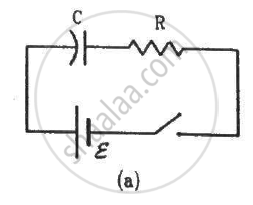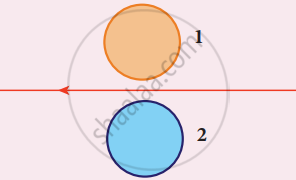Advertisements
Advertisements
प्रश्न
State the factors on which the strength of an electromagnet depends. How does it depend on these factors?
उत्तर
Strength of an electromagnet depends on following factors:
1. Number of turns in the coil:
By increasing the number of turns in the coil, the strength of electromagnet can be increased.
2. Current flowing through the coil:
By increasing the flow of current in the coil, the strength of electromagnet can be increased.
3. Length of air gaps between poles:
By reducing the length of air gaps between the poles, the strength of electromagnet can be increased.
APPEARS IN
संबंधित प्रश्न
Explain different ways to induce current in a coil.
How does an electromagnet differ forma permanent magnet?
The north-south polarities of an electromagnet can be found easily by using:
(a) Fleming's right-hand rule
(b) Fleming's left-hand rule
(c) Clock face rule
(d) Left-hand thumb rule
A conducting rod is moved with a constant velocity v in a magnetic field. A potential difference appears across the two ends _____________ .
The switches in figure (a) and (b) are closed at t = 0 and reopened after a long time at t = t0.


(a) The charge on C just after t = 0 is εC.
(b) The charge on C long after t = 0 is εC.
(c) The current in L just before t = t0 is ε/R.
(d) The current in L long after t = t0 is ε/R.
A coil has a self-inductance of 0·05 Henry. Find the magnitude of the emf induced in it when the current flowing through it is changing at the rate of 100 As-1.
Using Lenz’s law, predict the direction of induced current in conducting rings 1 and 2 when the current in the wire is steadily decreasing.

The condition for the praenomen of electromagnetic induction is that there must be a relative motion between ____________.
A conductor of length 50 cm carrying a current of 5 A is placed perpendicular to a magnetic field of induction 2×10 -3T. Find the force on the conductor.
Show that for a given positive ion species in a cyclotron, (i) the radius of their circular path inside a dee is directly proportional to their speed, and (ii) the maximum ion energy achievable is directly proportional to the square of the magnetic induction.
